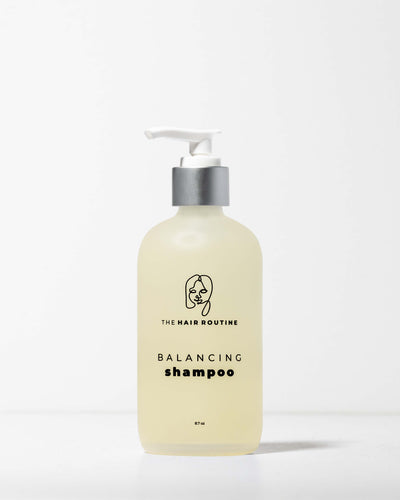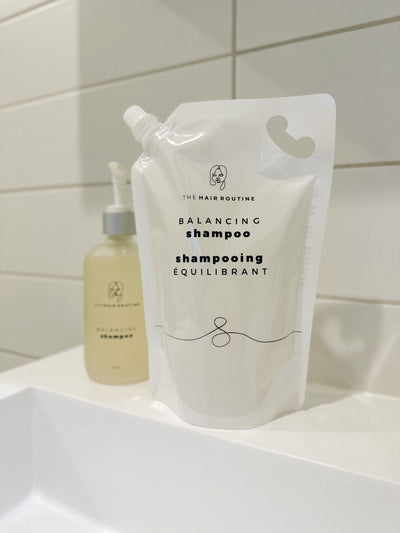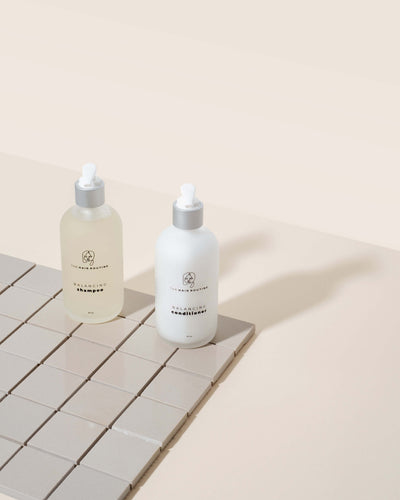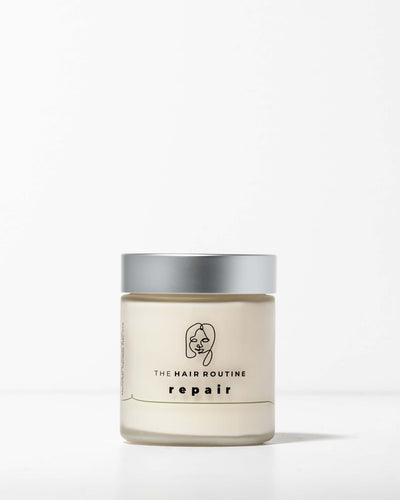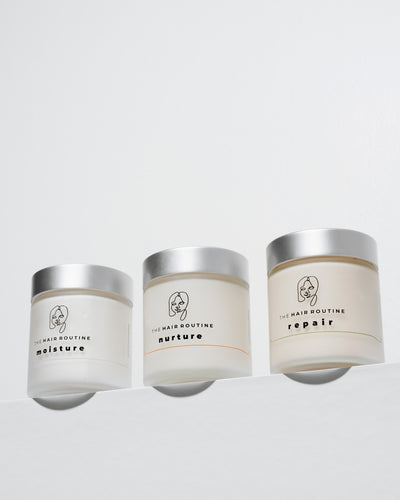Ten Hair-Washing Rules Hairdressers Follow
If you want to master your hair care routine, start with the basics: your hair washing technique. Hair washing is the foundation for a proper well-rounded hair care routine and it’s often considered unimportant, but we could always learn how to do it better. Ever wonder why your hair feels cleaner after going to the hairdresser? Perfect your hair washing technique with ten rules from hair salon experts. Let's get into it!

Hair Washing 101, Perfecting The Technique
Water temperature
The right temperature for hair washing is neither hot nor cold. Extremely hot water will damage the strands and extremely cold water will make hair washing uncomfortable when it should actually be relaxing. Shower time is self-care time, a time to destress and cleanse your body, your hair, and your thoughts. Warm water is best when shampooing the hair because it helps open the cuticles and remove dirt. If you want to use cold water do it at the end, when you’re rinsing your conditioner, this will seal the cuticles leaving the hair smoother and shinier.
Scrubbing
Most people tend to scrub the scalp very intensely, thinking it’s doing a better job at cleaning. There’s no need for that. When it’s wet, hair is 3 times weaker. Scrubbing with your fingernails or in a very harsh way will tangle the strands, damage the cuticles and you’ll end up losing more hair than you’re supposed to. The best way to scrub is by going in and gently scrubbing with the tip of your fingers following a side-to-side motion (not a circle motion).
The Foam
There’s no need for it. None, zero, nada. The foaming effect of shampoos is caused by an additive that companies use to make it seem like the product is doing a good job at cleaning. A lot of companies use detergent in traditional shampoos in order to make users think that the product works better at cleaning. You can find excellent shampoos that make very little or absolutely no foam, while still cleaning the hair.
Washing the scalp
The scalp is the only part of the head that needs washing. It produces the natural oil that hair needs to be nourished. The ends do not produce any oil, that’s why they are always drier than the scalp. When shampooing the scalp there is no point in rubbing the ends with shampoo, doing so will dry them even more and they will split faster than usual. When you rinse the shampoo off, everything from the scalp drips down to the ends, cleaning them in the process.
Amount of shampoo
As mentioned before, the area that needs to get shampooed is the scalp. Most humans have similar head sizes, meaning that there is no need to increase or decrease the amount of shampoo depending on the length of hair but depending on the size of the head. Two dime-sized drops or two pumps is enough to completely cleanse the scalp. One pump to scrub the front of the head and one to scrub the back, around the neck and ears.
Working the shampoo
Scrub the front of your head gently and move the hands side-to-side (NOT IN CIRCLES). Then, flip your head upside down and work the back with your fingertips focusing on the parts that get most oily. This way it’s easier to gently scrub some parts and the blood will flow to your head giving your scalp an extra stimulus for hair growth. Take your time for this step, let the shampoo work its magic.
Frequency
Once a week or once a month? Every day or never at all? It’s really up to you. Just know that cleaning the hair means stripping away the natural oils that nourish it. Some people wash it everyday thinking that they cannot go longer without doing so because it gets very greasy. Cleaning it daily sends a signal to the scalp that there is no oil left and it has to produce more. The expert recommendation is to wash it once or twice a week. Look for a Balancing Shampoo that is gentle to the scalp and the strands to avoid over drying them.
Hair Masking
After rinsing the shampoo off, apply the hair treatment that’s according to your Hair Routine: it can be Moisture, Nurture, or Repair. Leave the hair mask on for 7-20 min. The time depends on the ingredient list and the level of Moisture or Nurture that you’re aiming for. Do not leave the Repair treatment for longer than suggested as it may be too much protein for the hair to handle and it can lose its flexibility and break.
What is a Hair Routine and Why Follow One?
Conditioner
Use a conditioner as the last step in your hair washing routine. Leave it on somewhere between 2-3 minutes and make sure it has no silicones or petroleum. There is no need to leave it for an excessive amount of time after completing a hair masking.
Order
The order in which you’d want to follow a hair washing routine is very important. First, shampoo. The Hair Routine Balancing Shampoo has a pH of 5.8 – 6.5 so that, when it comes in contact with the strands, the cuticles open up a bit for a better cleanse. Next goes the hair mask, it can be a Moisturizing, Nourishing, or Repairing treatment depending on what your hair needs that wash. Last, but not least, apply conditioner. The Hair Routine Balancing Conditioner has a pH of 3.9 – 4.6 to seal the cuticles saving all the goodness from the hair treatment inside.
Remember to always look for products that are free of silicones and mineral oils, these ingredients leave heavy residue on your scalp and are extremely complicated to clear.
Adopt a routine that includes water, oil, and protein in the variations that suit your hair needs. To know exactly what your hair needs and which treatment is best for your hair, complete this hair test and receive your routine. Receive the products you need to keep up with your routine by subscribing to the bundle that best fits your needs. Your products will be delivered on a timely basis so that you can stay consistent with your routine.

